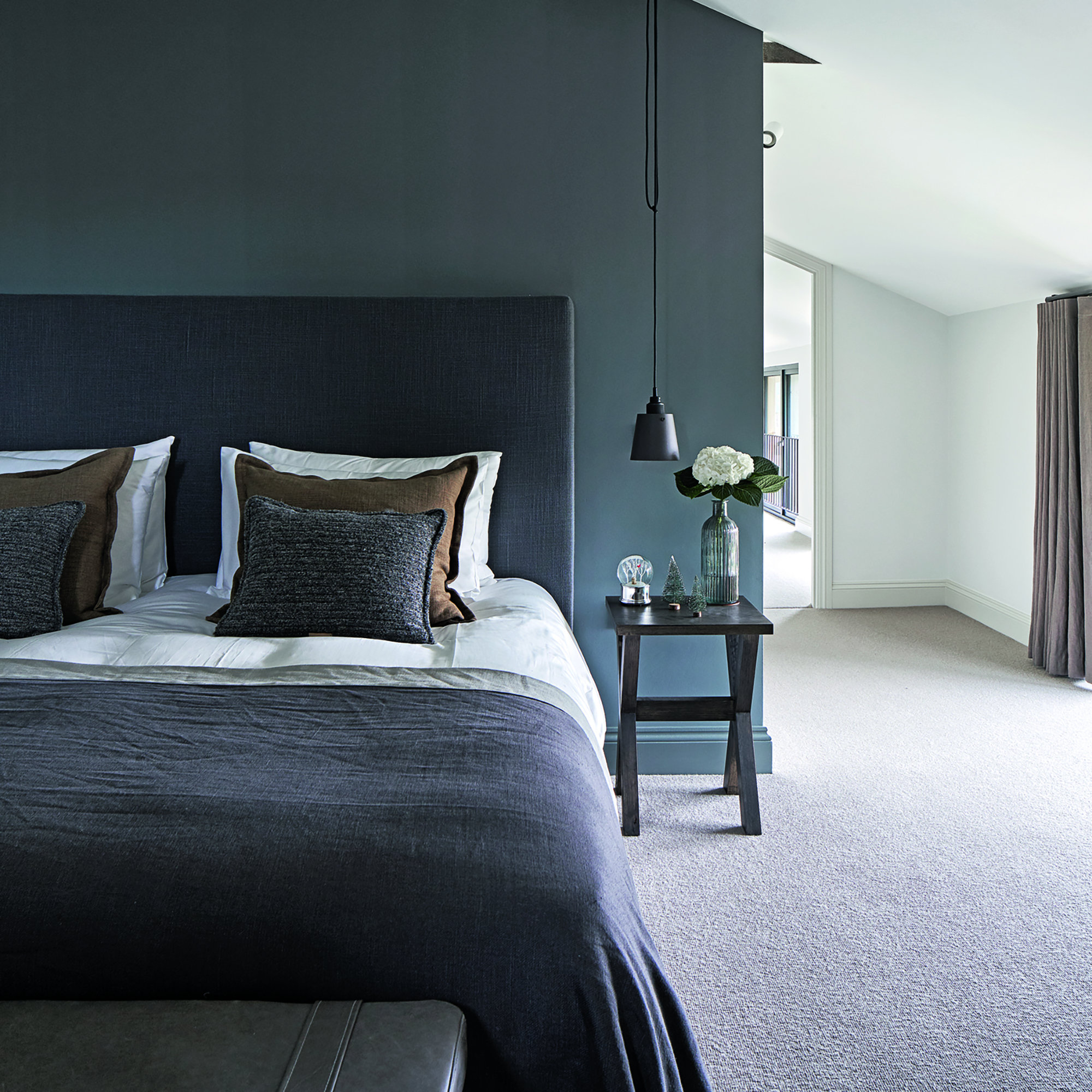Don't install underfloor heating without knowing these 5 things, according to heating experts
What you need to know before you get started


When it comes to ways of heating a home, underfloor heating (UFH) is one of the best. There are so many benefits to this type of heating when compared to traditional radiators – no more cold spots, lower running costs and longer lifespans to name but a few.
That said, there are also some factors to bear in mind before jumping in and paying out to buy a whole-house underfloor heating system and that's what we're here to help with.
We asked the experts for the advice they would offer to anyone considering underfloor heating – it isn't necessarily always the best option.
Underfloor heating is hugely popular and although it was once thought of as only being suitable for people building from scratch, it is now being used by those extending and renovating too.
'UFH systems are comfortable and energy efficient but there are some considerations to make sure it’s 100% right for your home,' point out Alan Houghton and Gordon Chalk, managing directors of Next Level Underfloor Heating and Screed Solutions.
1. Not all flooring is suitable for UFH

It is really important to note that not all types of flooring are suitable for use over underfloor heating systems, so if you have your heart set on a particular flooring material that can't be used with UFH you may need to rethink your central heating choices.
'The best flooring is that with good thermal conductivity, such as tile, stone or engineered wood,' says Alan Houghton. 'These allow heat to pass through easily and evenly.
Sign up to our newsletter for style inspiration, real homes, project and garden advice and shopping know-how
'Porcelain, ceramic and stone tiles are the best options, followed by engineered wood and certain types of vinyl,' continues Alan. 'These provide quick heat transfer and are durable enough to withstand the constant heat.'
So which floor coverings don't work as well with UFH and can you have underfloor heating with carpet?
'Solid wood, thick carpets or high-tog underlays should be avoided as they insulate against heat, reducing the system’s performance and efficiency,' says Alan.
'If you must have carpet, go for a low-tog (thermal resistance) option. We recommend a tog rating of 1.5 or lower so your underfloor heating can run efficiently.' Somerset carpet from Tapi has a tog rating of 1.3 and is suitable for use with UFH.

Managing directors at Next Level Underfloor Heating and Screed Solutions LTD. Helping property owners get warmer and more comfortable with underfloor heating and proper floor screed. Their mission is to bring the warmth to as many properties as possible.
2. UFH is more expensive to buy than radiators

If you're on a really tight budget and are aiming for a quick, cheap upgrade for your home, then UFH might not be the best option, certianly in the battle of underfloor heating vs radiators.
'Underfloor heating costs vary depending on the system, area and complexity of the installation,' explains Alan Houghton.
Electric underfloor heating tends to be cheaper to buy and install than water-based systems and is a great option for those retrofitting, but it has higher running costs.
'Water-based underfloor heating is a more economical and energy-efficient option than electric underfloor heating if you intend to set underfloor heating up throughout your entire house,' explains Anthony Smith, director at Midland Air Conditioning.
'For electric systems, installation cost is £50-£75 per m2, while running costs depend on electricity rates and usage. For smaller rooms or occasional use they’re a good option,' says Gordon Chalk. 'Water-based systems cost £100-£150 per m2 to install but running costs are lower, especially if paired with a high efficiency boiler or renewable energy source.'
The Klima 10m² 1500W Underfloor heating mat from B&Q is easy to install and costs just £24/m2.

Anthony Smith is the Director of Midland Air Conditioning Ltd, a trustworthy air conditioning, solar panel and EV charger provider offering installation, maintenance and repair services in the West Midlands. Anthony has over 28 years of experience in the HVAC industry.
3. Good screeding is key to efficient UFH

While not the most glamorous of topics, screeding is so important if you want to ensure that your new UFH system works well for you so you need to account for this both in terms of installation timescales as well as costs. It doesn't matter whether you are considering underfloor heating in a bathroom or in your living room, screed matters.
'When it comes to underfloor heating, the type of flooring and the installation method are important but nothing is more crucial than the floor screed,' says heating expert Gordon. 'A good floor screed supports the structural integrity of your floor and also boosts the efficiency of your underfloor heating system.'
'A well laid screed acts as a thermal mass which helps to distribute the heat from the underfloor heating system evenly meaning that there will be no cold spots and the whole floor area is heated,' continues Alan from Next Level Underfloor Heating. 'The thermal properties of screed mean once it’s warm it retains heat for longer. This means less heating and cost savings in the long run.
'Screed also acts as a protective layer for the heating pipes or cables,' adds Alan. 'It cushions them from damage from foot traffic or heavy furniture so you extend the life of your heating system. Whether you’re installing tiles, wood or even carpet the right type of screed means your chosen floor covering is fully compatible with the underfloor heating system and provides a stable base.'
4. Some maintenance is required

All types of central heating systems require a degree of looking-after if you want them to remain running at optimum performance levels – underfloor heating included.
'Underfloor heating systems are low maintenance but it’s important to ensure they are installed properly to avoid any problems,' advises Gordon. 'Regular checks on the system, especially the thermostat and the screed’s integrity, will help to maintain optimal performance.'
'Regular inspections by a professional will extend the life of your system,' adds Alan Houghton. 'For water-based systems, annual maintenance of the boiler and checks on the pipes will prevent any potential issues and your heating will run smoothly for years to come.'
5. Wet systems are disruptive to install

If you are considering upgrading the heating system in your existing home and are thinking of underfloor heating as an alternative to radiators, there are a couple of things to bear in mind in terms of the disruption it will cause.
While wet systems are brilliant in self builds and extensions, if you are wondering how to retrofit underfloor heating you will quickly learn that it is not always an easy solution for those renovating.
'Although water-based systems are more cost effective in the long run, they are best for new builds or larger areas,' explains Alan. 'They require more extensive installation work, including a properly insulated floor screed to ensure heat distribution and efficiency.'
To install a water-based UFH system in an existing house, in many cases the floor will need to be taken up for pipes to be laid and new screed to be poured. Even in cases where the floors aren't taken up, the finished floor level will still be higher meaning doorways and thresholds will need tweaking.
For this reason, those retrofitting often opt for electric UFH instead.
'Electric underfloor heating is the ideal choice if you want to install underfloor heating in just a few rooms of your house because it is connected to your main electrical supply,' says HVAC expert Anthony.
'The running costs are high, so it’s best used for small areas. Also, the installation process is quick for this type of heating. Water underfloor heating is a more economical and energy-efficient option than electric underfloor heating if you intend to set underfloor heating up throughout your entire house.'
Shop electric underfloor heating

If you want an easy-to-install system then this one is well worth a look as it features self-adhesive backing . The mat is just 3mm thick meaning you don't need to worry too much about your floor levels. Despite its slimline measurements, the mat has an output of 150W per m². Bear in mind that all electrical connections must be carried out by a qualified electrician.

If you want an underfloor heating system that you can install on a DIY basis then this is the kit for you. It comes complete with everything you need to enjoy cosy toes. Another bonus of this kit is that you can choose from a range of thermostat options, including a smart thermostat that can be controlled through Amazon Alexa or Google Assistant.

A brilliant option for anyone looking for an underfloor heating system to fit beneath laminate or engineered wood flooring. This kit is really simple to install, offers great value for money and comes in a wide range of sizes to suit all kinds of homes. Another handy feature of this product is that up to 24m2 of these mats can be controlled by just one thermostat.
FAQ
Wet underfloor heating vs electric: What's the difference?
There are two different types of underfloor heating: electric (dry) and water-based (wet) systems.
With electric systems, thin heating wires, often set within matting are placed under your flooring and the wires heat up when switched on.
With wet systems, pipes are usually buried beneath floor screed. These pipes are filled with warm water and can be powered either by a boiler or, as is becoming more common, a heat pump.
When is underfloor heating a bad idea?
There are some types of homes that underfloor heating is not suitable for.
'Underfloor heating is not a one size fits all solution,' says heating expert Alan Houghton. 'There are areas where it may not be the best option, such as rooms with poor insulation or where you plan to use thick insulating floor coverings.
'If you live in an older property with inefficient windows or poor overall insulation you may need to address these areas to get the most out of underfloor heating,' continues Alan.
'Before installation do a thorough assessment of your home’s insulation,' suggests Gordon Chalk from Next Level Underfloor Heating and Screed Solutions. 'The better insulated your home the more efficient your underfloor heating will be. We often recommend upgrading insulation in older homes so the heat doesn’t escape and the system becomes more expensive to run.'
If you live in an older property, look into how to insulate your home before considering a new heating system of any kind.
Still undecided on whether or not underfloor heating is the right option for you?

Natasha has been writing about everything homes and interiors related for over 20 years and, in that time, has covered absolutely everything, from knocking down walls and digging up old floors to the latest kitchen and bathroom trends. As well as carrying out the role of Associate Content Editor for Homebuilding & Renovating for many years, she has completely renovated several old houses of her own on a DIY basis.